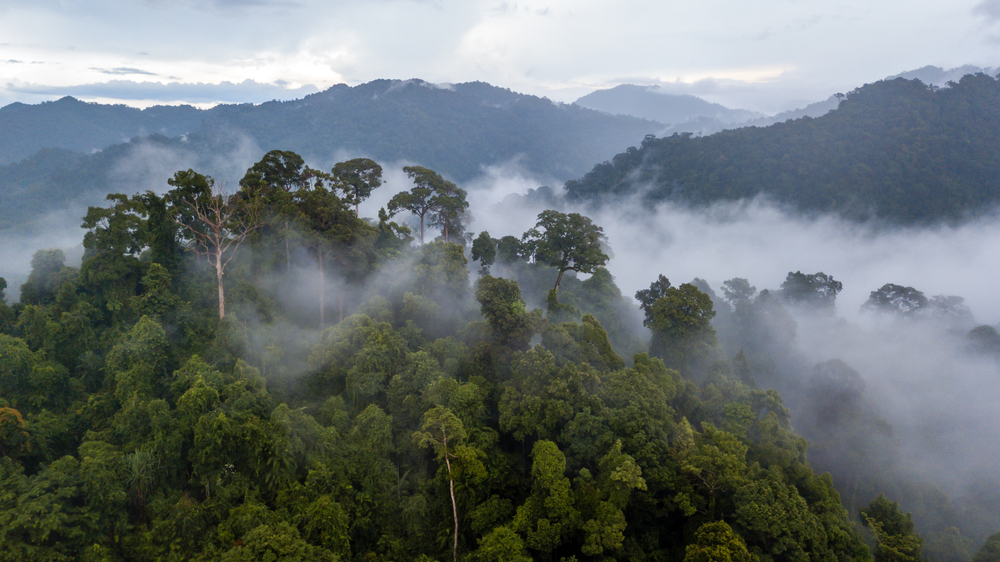A recent flurry of launches saw HSBC Asset Management, BNP Paribas Asset Management and new issuer AXA Investment Managers offer their takes on how to screen equity exposures for biodiversity impact within an ETF wrapper.
The three strategies debuted within a two-month period, with HSBC AM leading the way on an ETF tracking what it described as the first biodiversity-screened index.
In fact, French asset manager Ossiam already offered its own twist on the theme via its ‘food for biodiversity’ ETF which launched in December 2020, however, the strategy might raise some eyebrows by offering top weightings to two mass-producing wholesalers, top palm oil purchaser Nestle and vendor of famously-hard-to-recycle single-use cups Starbucks.
The ETF also captures McDonalds and Ahold Delhaize, which in recent years have partnered with Cargill, among the largest deforesters in Latin America, according to NGO Mighty Earth.
In this case, the new batch of ETFs could offer a new and potentially more convincing take on biodiversity, as well as another lens to overlay ESG – much like other strategies measuring companies’ carbon reduction or exposure to water risk.
Passive global biodiversity ETF
The first of the new wave, the HSBC World ESG Biodiversity Screened Equity UCITS ETF (HBDV), tracks the Euronext ESG Biodiversity Screened World index of around 500 companies developed in partnership with Iceberg Data Lab (ICB).
As a baseline for its ESG basket, HBDV’s benchmark takes the Euronext World index and removes the worst 25% of companies based on Sustainalytics ESG risk scoring on corporate governance, material ESG risk and idiosyncratic risks.
The index then applies corporate biodiversity footprint screens to remove companies with significant involvement in pesticides, hunting and whaling, as well as industries regularly removed from ESG benchmarks such as thermal coal and oil sands.
The end goal is to increase the biodiversity footprint on HBDV’s index by around 35% versus the conventional benchmark, based on ICB data.
More broadly, the ETF’s index tries to emulate Taskforce on Nature-related Financial Disclosure (TNFD) tenets by focusing on companies reporting on ecosystem degradation, biodiversity loss and indirect drivers such as water usage, water and land pollution, air pollution and waste generation.
The incorporation of screens against activities negatively impacting biodiversity certainly set HBDV apart from ESG peers when it came to market in Europe, however, it will be interesting to see whether this biodiversity ETF and others start including screens against other activities such as deforestation, trawling, gas flaring and habitat contamination via harmful substances.
For now, it invests in asset managers which themselves invest in companies that would not meet HBDV biodiversity screens, which justifies its categorisation under ‘light green’ Sustainable Finance Disclosure Regulation (SFDR) Article 8, rather than ‘dark green’ Article 9. The ETF carries a fee of 0.35%, joint-cheapest in class.
Active global approach
Taking an entirely different approach to its global equity exposure, the AXA IM ACT Biodiversity Equity UCITS ETF (ABIU) is actively managed and has discretion in how much it can deviate in company, country and sector makeup versus its performance reference benchmark, the MSCI ACWI index, save for a 10% on China A-Shares exposure.
ABIU takes the stock universe of its benchmark and according to AXA IM, uses a combination of qualitative and quantitative measures to identify companies with attractive fundamentals while offering solutions to causes of biodiversity loss such as pollution on land and in water, land degradation, desertification and overconsumption.
To compare companies on biodiversity impact, AXA IM uses a combination of internal and external data covering target UN Sustainable Development Goals 6, 12, 14 and 15 covering clean water and sanitation, responsible consumption, life below water and life on land.
ABIU applies a ‘selectivity’ approach, meaning it excludes at least 20% of the initial investment universe based on their contribution to – or lack thereof – to the target SDGs, as well as applying the firm’s in-house Sectoral Exclusion and ESG Standards policies to remove ‘usual suspect’ bad actor sectors.
AXA IM noted such screens do not apply to its investments in derivatives and eligible non-UCITS funds. This is significant given ABIU retains the ability to be up to 200% invested in derivatives – though typically used for hedging purposes – and typically lends out up to 30% of its underlying, This means it could potentially be exposed to derivates and collateral not aligned with positive biodiversity outcomes.
The ETF will be categorised Article 8 under the Sustainable Finance Disclosure Regulation (SFDR) as of 1 January 2023. It also carries the highest fee in the product class of 0.70%, double that of its competitors.
Passive approach to biodiversity
Our final ETF, the BNP Paribas Easy ESG Eurozone Biodiversity Leaders PAB UCITS ETF (BIODV), launched a few weeks after ABIU in September and bears resemblance to HSBC AM’s HBDV in that it tracks the Euronext ESG Eurozone Biodiversity Leaders PAB index, using ICB data, to capture around 60 stocks.
Like HBDV, BIODV uses a best-in-class approach for ESG scoring, as well as sector exclusions and a biodiversity scoring overlay.
The ETF excludes companies involved in UN Global Compact controversies, controversial weapons, tobacco, coal, oil, shale gas and uranium as well as removing the lowest quintile of companies based on Moody’s ESG scoring from the conventional Euronext Eurozone 300 index.
The index then uses ICB data to select the top 30% of companies from each sector according to their Corporate Biodiversity Score. The resulting basket – approximately a fifth of the size of the parent index – is weighted to meet Paris-Aligned Benchmark (PAB) criteria including a 50% initial carbon reduction versus the parent benchmark while targeting a 7% annual rate of decarbonisation.
Euronext attempts to do all the above while maintaining relative sector weights versus the conventional index, with a performance tracking error of less than 1%. It maintains the ability to invest up to 10% of its assets in derivatives, primarily for hedging purposes, BNPP AM said. BIODV is currently categorised as Article 9 under SFDR and carries a fee of 0.35%.
Overall, it is probably too soon to call a winner given the ETFs’ lack of track records. Greater clarity on AXA IM’s active ETFs can likely be found by looking at the issuer’s equivalent mutual fund range, which it will use as the basis for future ETF launches.
Of the two passive strategies, BNPP AM’s BIODV offers a more exacting approach, however, it – like other PAB ETFs – could face a downgrade to SFDR Article 8 in due course.
In future, it would be interesting to see biodiversity ETFs with exclusionary screens for more activities as well as an impact focus on sectors such as recycling and waste management, ecotourism and plant-based diets
This article first appeared in ETF Insider, ETF Stream's monthly ETF magazine for professional investors in Europe. To access the full issue, click here.
Related articles






